A Comprehensive Guide to Conducting a Thorough Site Survey

This post was written by Josh Weiner, Solar Expert Witness & Solar Site Survey Expert. Mr. Weiner has been at the forefront of the solar industry for over 20 years and is an industry leader on solar engineering product and project development, policy, law, planning, codes and standards, and technology.
 Highlights
Highlights
All too often, we notice developers & contractors think of engineering site surveys as little more than data collection. They go onsite, snap photos, maybe even record a video, and take down relevant data points. After transferring this data to their engineering firm, a slew of follow up questions, action items, and clarifications often ensue, potentially delaying the project, resulting in re-work, and several coordination meetings that bog down everyone’s time. Why does this happen? Keep reading…
Data Errors
We probably don’t need to explain every bad thing that can happen if the information is incorrect, but we’ll give a quick example. For instance, if you provide the wrong service voltage or voltage configuration (delta vs wye!), your project will be designed to that accordingly. And if that happens, your system won’t turn on when it’s finished. If this were to happen, everything would need to be ripped out, redesigned, and reinstalled, and it would cost a pretty penny more than you originally budgeted for. We’ve actually seen this happen.
Sales/Concept Validation
Ever met a sales or development team that put together a concept layout that doesn’t actually work? Yes, we have too. It’s unfortunately the case that there are tons and tons of rules and regulations that govern real estate usage, and it’s unreasonable to expect everyone upstream from the project planning phase to capture 100% of these details that significantly impact final design. And, SepiSolar must know these rules, or else our work products don’t generate permits. Thus, we prefer to impart this knowledge and experience upstream as far as possible to validate and verify these details before proceeding with mission-critical design decisions that can have costly consequences if changed later. For instance, were all fire setbacks taken into account? Ingress & Egress? Underground lines? Civil survey? Equipment clearances? Operations & Maintenance pathways? Security fences? Shading obstructions from nearby buildings, hills, or vegetation? And so on…
Critical Path Coordination
This is the single, biggest missed opportunity with any engineering site survey – critical path coordination. The job site is a magical place – all the good, hard, honest planning work is done for and around the job site, the future construction will happen here, the owner may be close by, discoveries will be made, and problems to be solved… Basically, what better place is there to meet with the project owner, GC, subcontractors, and other stakeholders to ensure that all major critical paths are mapped out and accounted for? This is how we maximize the value of a site survey – identify critical paths, coordinate them, and put a plan together, all in one place at one time, with all relevant parties represented and involved.
The moral of the story is not to let something missed opportunities fly by you. Take the extra step to get a proper site survey with appropriate parties present, because at the end of the day, a site survey goes deeper than just data acquisition. It’s also discovery, verification, coordination, and planning, and it covers almost every mission-critical area of your project.
Now that you know why you need a detailed site survey, let’s dive into what that process looks like, and how you can get the most value out of it.
Coordinate with Stakeholders
In general, your biggest players will be your electrical Engineer of Record (EOR), your civil EOR, your structural EOR, the construction general contractor and subcontractors, and the project manager.
With these stakeholders in mind, here’s a breakdown of the value each one contributes to the project:
- Electrical EOR: They’re the project’s authority for all things power. During the pre-construction planning phase, these engineers not only ensure all electrical components will work properly onsite, but they also decide where to place them.
- Civil EOR: These engineers handle the overall infrastructure, including pipelines, waste management, zoning requirements, and more. They’re also responsible for testing the building materials and soil to confirm the strength of the foundation. As you can imagine, these aren’t things you’ll want to course-correct later, so make sure your civil engineering team is solid.
- Structural EOR: Structural engineers are a type of civil engineer who help make sure your project is up to code and compliant with standards. They also design and review foundations, walls, roofs, and more to confirm the stability of your project. Most importantly, structural engineers make sure everyone stays safe during the construction process, so it’s unwise to build without one.
- Project Manager: The project manager is accountable for all activities that are planned and executed on a project. This includes client communication, contract (and subcontract) management, change management, subcontractor coordination, CPM scheduling, budgeting / estimating, procurement, design development, permitting, utility interconnection, construction, commissioning, acceptance testing, as-built’s, and project close-out. Having a good project manager to control and manage scopes, budgets, and schedules is key for project success.
- General Contractors & Subcontractors: If finding and managing the engineers on this list seems overwhelming, you can hire a team of experts under one roof. That’s what design-build, GC, and EPC firms are for.
The takeaway is that when you partner with a knowledgeable team during the site survey process, you catch and solve problems before they become expensive, draining headaches. Don’t let yourself become the person that needs to correct any million-dollar mistakes.
Consider the Most Important Information
Now that you know who should be involved in your site survey, let’s look at a few fundamental project components you need to keep in mind. Although this is not an exhaustive list, it’s a good place to start for now.
Offtake Agreements
Most lenders require offtake agreements for loan approval, so they’re extremely important to the success of the project. Basically, offtake agreements are proof that a market exists for the byproduct of the work that you’re doing. Most importantly, they allow you to account for profit well into the future. Because this is one of the most pertinent financial documents you’re going to have, it’s smart to make sure your agreement is as sound as possible.
Interconnection Studies
Conducting an interconnection study mitigates issues with information exchange and data transmission, and it accounts for both primary and alternative interconnection points. This also determines any circuit, voltage, or general reliability issues. Like we mentioned in our example, providing the wrong voltage (or really the wrong number for anything, to be honest), can throw your project budget off the rails. The smartest thing to do is make sure your team collects and applies this data, so there are no unhappy surprises later.
The Site Survey Itself
After your team has taken note of the site’s boundaries, utilities, and overarching features, they’ll transfer the layout from the designs to the site itself to verify the accuracy of the measurements. From there, your team will correct any errors to prevent complications during the project.
While these are some of the most pressing things to consider during the pre-construction planning phase, this is just scratching the surface. Successful construction projects include hundreds of moving parts. Fortunately, SepiSolar has a history of tracking every detail.
Decide What to Do Next
Once you understand what the site survey should entail, now you have to decide if you want to have an in-person or a virtual team. Remote surveying can potentially offer some cost savings, but in our experience, it’s a bit deceptive. When you have everyone on-site and in-person, they better understand how to streamline the work and plan around each other’s strengths, which ends up mitigating some of the extra spend. If you optimize the project right from the beginning, you’re not only getting a higher quality outcome, but you’re also saving time on the backend.
By going through the site survey process in-person, you’re able to have your questions answered in real time. In addition, you can review the design, build execution strategies to optimize the timeline and cost, and solidify an action plan that makes sense.
Sepi has the experience and partner network to ensure your site survey is through, well-rounded, and done right the first time. Contact us to learn how we can help get your project off to a great start.


